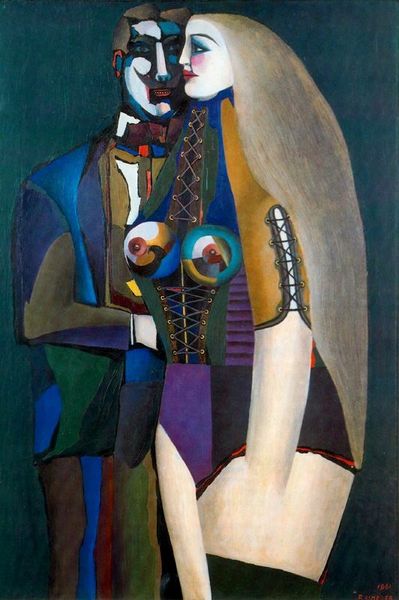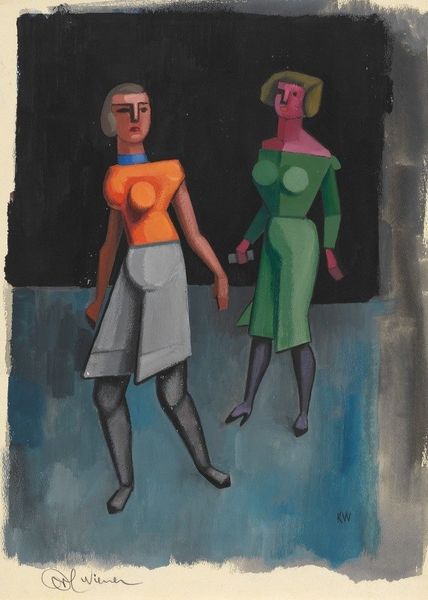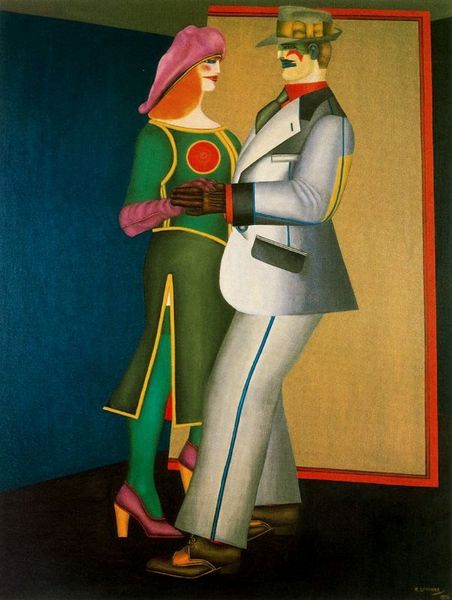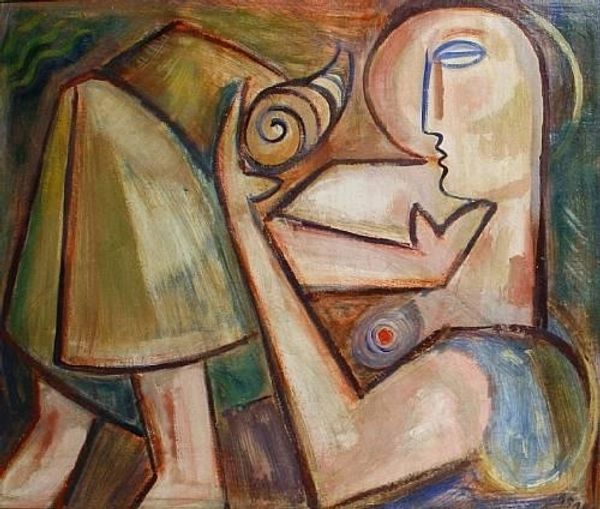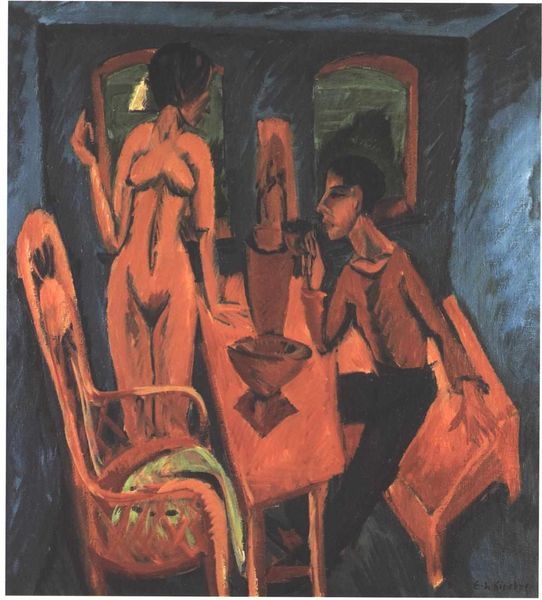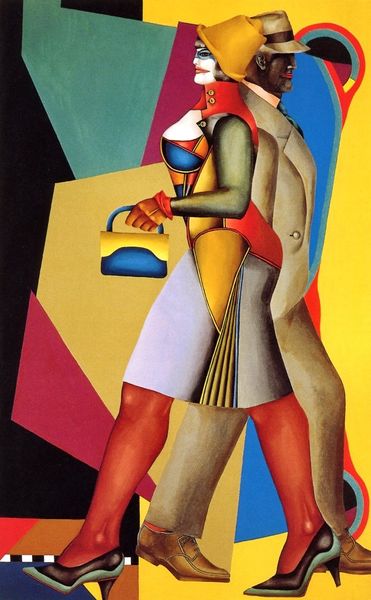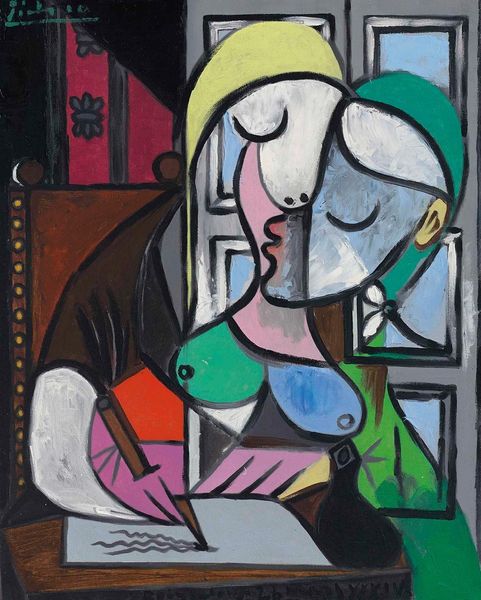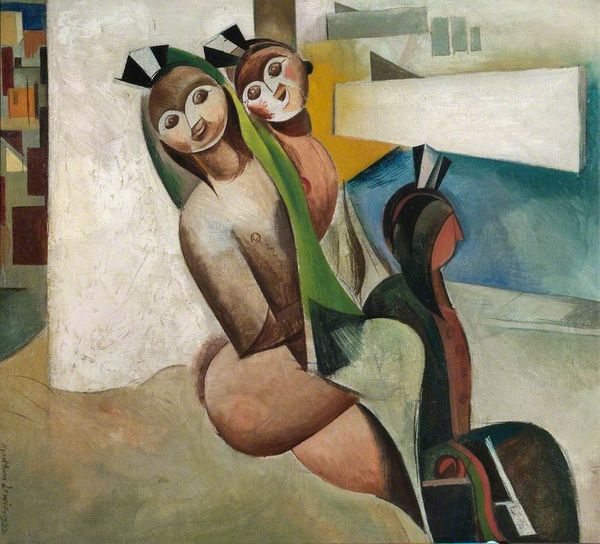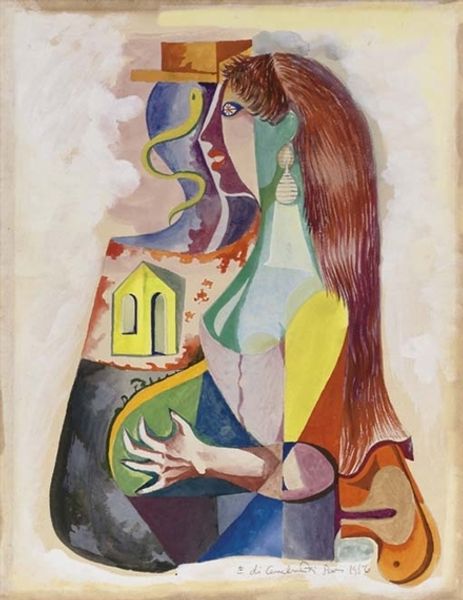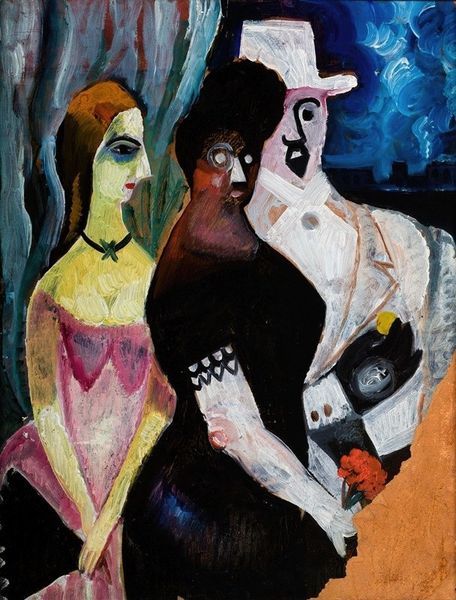
mixed-media, painting, acrylic-paint
#
portrait
#
mixed-media
#
painting
#
acrylic-paint
#
figuration
#
group-portraits
#
pop-art
#
surrealism
#
modernism
#
erotic-art
Copyright: Richard Lindner,Fair Use
Curator: Standing before us is a mixed-media work by Richard Lindner titled "Contact." Editor: Immediately, I feel a palpable tension in this tableau, like a posed shot before a scandal erupts. What’s your sense of the dynamic here? Curator: Lindner often used the visual language of advertising and the boldness of Pop Art to explore themes of eroticism and modern alienation. There is a push and pull between the formal and the surreal here, and the subjects seem dehumanized in their portrayal, don’t you think? Editor: Absolutely. There is a disturbing stillness. The figures, particularly the woman with her mask-like face, almost feel like mannequins. I notice a critical tension, the woman in a high-heeled shoe is eroticized while the artist deliberately refuses to portray their potential, perhaps, humanity? Curator: Exactly. And I love how he uses bold, almost garish colours – bright reds, blues, greens. I am wondering, are the pair connecting? Editor: A question I immediately asked myself, Lindner's jarring color palette clashes but it also enhances the feeling of artifice. I'm drawn to the power dynamics at play; there's the male figure, rigidly composed with geometric shapes. And then there is the figure, I feel that it could reflect not so subtle power relations when contemplating male gaze. Curator: He worked across multiple styles - pop-art, surrealism, and modernism all seem to be here! All with this strange tension and alienation. He came from Nazi Germany and perhaps that shaped his feelings about humans. Editor: Precisely! This piece becomes all the more relevant when we consider that Lindner fled Nazi Germany. It's easy to see these works as commentaries on alienation, desire, and the commodification of the human body. Curator: Seeing it that way definitely sheds more light on the intention, it really invites introspection. This wasn't just about creating art, it was about reflecting the society he saw—and critiquing it. Editor: Right! What a sharp way to turn observation into this biting, enduring critique. I think the painting certainly stands as an intersectional reflection of power, desire, and displacement.
Comments
No comments
Be the first to comment and join the conversation on the ultimate creative platform.


